Last updated on October 18, 2022
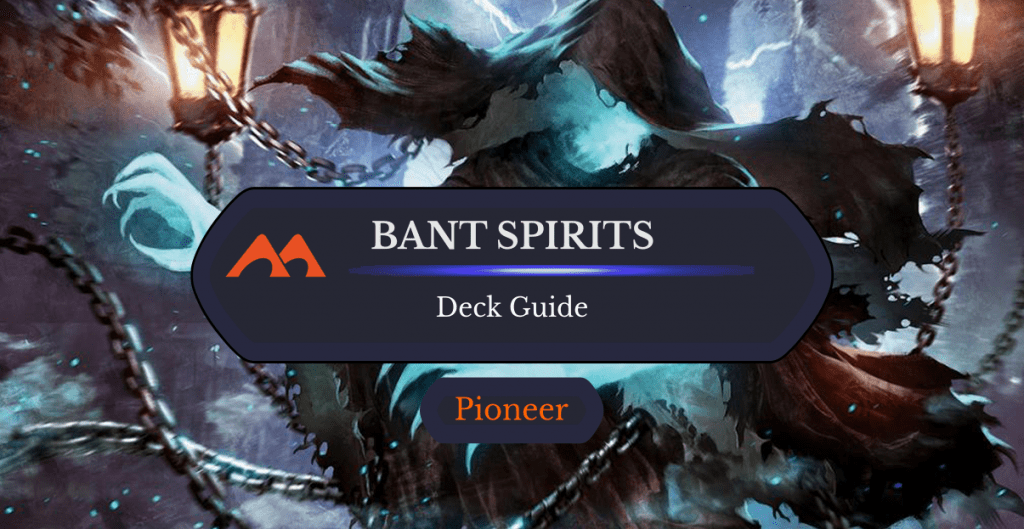
Rattlechains | Illustration by Lius Lasahido
Bant Spirits was inspired by the Modern deck of the same name and became a staple in Pioneer early in the format’s history. The Spirits archetype split into three builds as time went on: Bant (), Azorius (), and Mono Blue. The overall best version against an open field is Bant, and it continues to show promise in Challenges and Pioneer Leagues every week.
But without some of the most powerful cards in the Modern builds, like Noble Hierarch, how does Bant Spirits adjust to the card pool restrictions in Pioneer? Let’s dive in and find out!
Making Bant Spirits Work in Pioneer
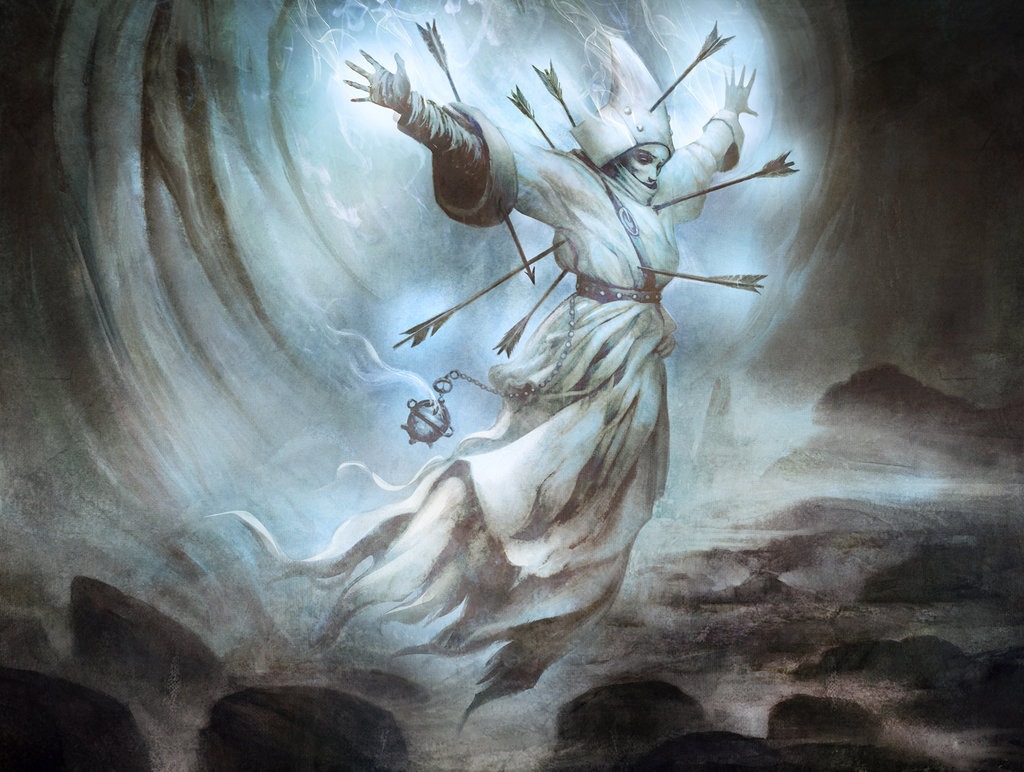
Selfless Spirit | Illustration by Seb McKinnon
Bant Spirits adapted to Pioneer card restrictions by becoming a more focused flying and spirit tribal deck. While more fragile and a little slower, Pioneer’s version leverages interactive creatures and turns the corner immediately upon resolving a Collected Company or several lords.
Like most tempo-aggro decks, Spirits plays best against decks trying to resolve powerful 3- and 4-mana cards. Your aim is to get an aggressive start and then use cards like Spell Queller, Selfless Spirit, and Mausoleum Wanderer to favorably interact with your opponent’s ways to catch up. While you might struggle against other aggressive decks with cheaper interaction, your lords help you outsize other creature decks if they survive.
Decks like Bant Spirits can struggle against decks like Rakdos () midrange that overload on cheap interaction and can interact with you at instant speed, limiting the effect of your value cards like Rattlechains.
The Deck
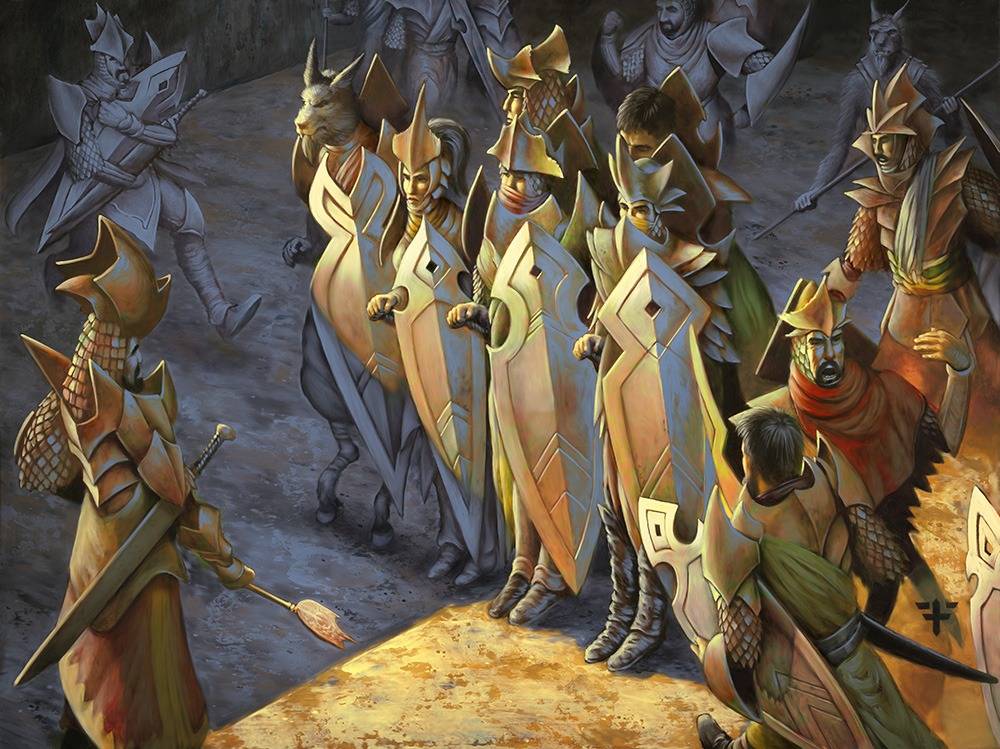
Collected Company | Illustration by Franz Vohwinkel
Creature (34)
Empyrean Eagle x4
Gilded Goose x4
Mausoleum Wanderer x4
Rattlechains x4
Selfless Spirit x4
Shacklegeist x3
Skyclave Apparition x3
Spell Queller x4
Supreme Phantom x4
Instant (4)
Land (22)
Barkchannel Pathway x2
Botanical Sanctum x3
Branchloft Pathway x3
Breeding Pool x2
Hallowed Fountain x4
Hengegate Pathway x4
Island
Mana Confluence x2
Temple Garden
Sideboard (15)
Deafening Silence x2
Disdainful Stroke x2
Katilda, Dawnhart Martyr
Mystical Dispute x3
Portable Hole x4
Reidane, God of the Worthy
Rest in Peace x2
This list is from a recent Pioneer challenge by Bant Spirit’s specialist Remf. Let’s break down the strategy behind this version of the build.
The Strategy
The main deck is straightforward, consisting only of creatures and Collected Company. Unlike the mono blue version that uses spell-based interaction, Bant uses creatures with enter-the-battlefield abilities to replace noncreature interaction and maximize your Companies.
1-Drop Creatures
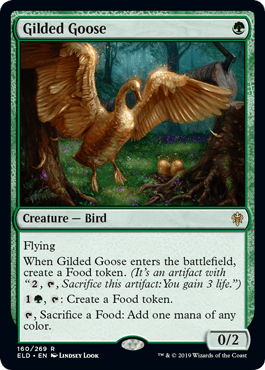
A new addition to the Bant Spirit decks, Gilded Goose has the benefit of being a flier for your cards that care about that. It can also help you gain some life in the late game against mono red. Goose is a boost of mana to help cast a 3-drop on turn 2 or play a turn 3 Collected Company in the early turns.
While you don’t get the consistent mana advantage that a card like Noble Hierarch gives the Modern version of Spirits, the one-time boost can pull you ahead. You can then use your interactive creatures to lock up the game.

Mausoleum Wanderer is your best aggressive 1-drop that acts as both a clock and interaction. You can make opponents’ sequences awkward and protect your key threats against removal. If your opponent isn’t playing heavy spell-based interaction then you can quickly pump Wanderer and attack for three or more on turn 2.
Lords play especially well with Wanderer by turning the activated ability from a Censor into a Mana Leak. It also plays very well with Collected Company to push through unexpected lethal damage.
2-Drop Creatures
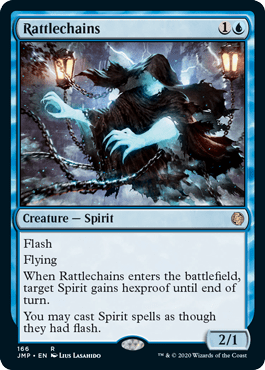
Your best tempo plays against spot removal, Rattlechains helps to protect your key threats and can create disastrous tempo plays where your opponent can no longer play around your spirits at sorcery speed. While it’s one of your worst threats on turn 2 if you’re not protecting something else, game blanking a removal spell with Rattlechains in the mid can seal a game by protecting lords and Spell Quellers.

Selfless Spirit started to see a decline with the rise of exile-based removal like March of Otherworldly Light. But it’s come back to protect your board from damage-based wraths and spot removal thanks to the rise of Supreme Verdict in Azorius and Anger of the Gods from Lotus Field Combo and Izzet ().
When paired with other interactive cards like Spell Queller and Mausoleum Wanderer you can craft board states that become suffocating to play against. Spirit is one of your first sideboard options when the opponent isn’t interacting with removal, but when it’s good it’s excellent.

Shacklegeist is one of the hardest cards for decks using big threats to beat. It’s also every Niv-Mizzet Reborn’s worst nightmare to boot.
Shacklegeist can help you tempo out your opponent or prevent large creatures from attacking you and winning the race whenever you’re playing against decks that can only block with one or two fliers. Given you can tap creatures even when it has summoning sickness you can play it as your last threat and suddenly eliminate a blocker your opponent needed to survive. This is one of the best tempo cards in the deck.

Your first spirit lord, Supreme Phantom pumps all your creatures except for Gilded Goose. It’s one of the better defensive options in the deck once you have a second lord and can be nearly impossible for red decks to answer if it gets to 4 toughness. While it’s less aggressive than the 3-drop lord it still does the trick in outsizing your opponent’s board.
3-Drop Creatures

Empyrean Eagle is your 3-drop lord that also pumps all your creatures (with one exception). But this time it’s Skyclave Apparition. Being a natural 2/3 means that you can quickly get Eagle out of burn range while acting as a quick clock.
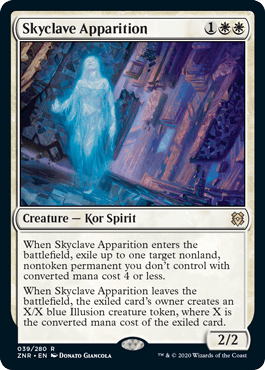
Previous builds played Watcher of the Spheres but you’re able to deal with decks like Winota and troublesome cards like Thing in the Ice much cleaner by playing Skyclave Apparition. While red decks can often kill it, the 1/1 or 2/2 they get from it is worse than the creature you ate and delays their tempo enough for you to set up a dominant board.
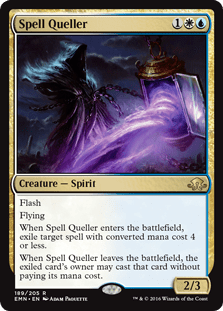
Spell Queller is still one of the premier reasons to play Spirits in any format. Being able to meaningfully add pressure to the board while interacting with any spell that costs four or less is powerful enough that few cards in Spirits lead to as many blowouts as Queller.
While a fragile creature, you can win before your opponent has a chance to interact if you can protect your board from wraths and removal. Queller can sometimes force a concession on the spot if you’re already ahead on board even as one of the more skill-testing cards in close games.
Collected Company
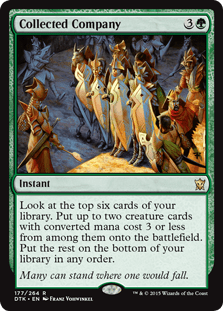
Collected Company is an incredibly powerful card, especially in a deck like Bant Spirits where every creature in your deck is a hit. While you have some hits that are better than others, you can leverage the threat of Company to force your opponent to not act and then flash in other threats and use Company after a wrath or when your opponent taps out to finish the game.
Like most Company decks its quality varies greatly, but in a tribal deck where most cards operate similarly the quality is generally higher than when you need to hit specific cards. You can gamble on hitting your four of cards like Mausoleum Wanderer or Spell Queller to help counter opposing removal.
The Lands
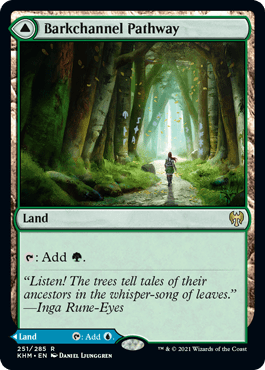
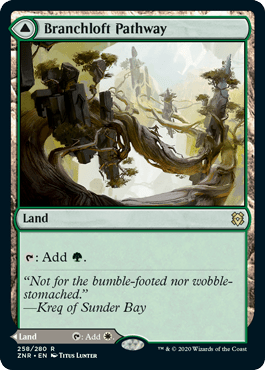

Barkchannel Pathway, Branchloft Pathway, and Hengegate Pathway maintain their place in 3-color decks by acting as alternating basics of whichever color you need at the time. You don’t need a lot of green sources since you’re an Azorius deck splashing for Collected Company, but you don’t want to miss out on the ability to cast Company when you have it. Pathways make that much easier than trying to exclusively play shocks or other lands.
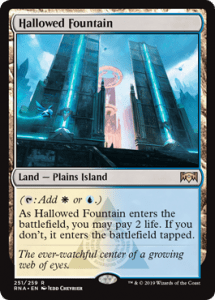


Like all 3-color decks in Pioneer, Hallowed Fountain, Breeding Pool, and Temple Garden are your main means of playing multiple colors early. You over-index towards blue and white, so consider that when checking your lands for spells you could draw.

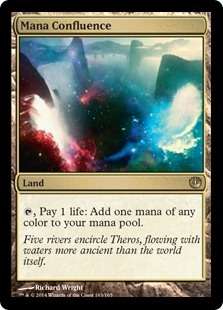
A few fast lands in Botanical Sanctum along with Mana Confluence help to give enough green sources without sacrificing other colors. While it can be painful to draw these lands in certain matchups or as a fourth land, the upside earns them their spots in your mana base.
Tips and Interactions

Mausoleum Wanderer | Illustration by Kieran Yanner
Rattlechains gives all your spirits flash which can allow for surprise pumps from lords or surprise Mausoleum Wanderers. Your best potential for blowouts often stems from using Rattlechains to fog a removal spell and then using the bonus flash to fog the next damage-based removal spell.
Spell Queller can eat cards that otherwise can’t be countered. That’s important against Azorius Control with Supreme Verdict as well as against Abrupt Decay. If you put a card that would be difficult for you to beat under Queller remember that your opponent will over-index to killing Queller at the least opportune time. Protect it accordingly.
You can take the role of being more controlling in post-board games, but you still need to set up a clock to make your controlling elements effective. You’re never going to out-control a dedicated control deck, so adjust your gameplan to attack the opposite strengths of your opponent’s deck.
You don’t have a lot of ways to catch up in this deck so be careful keeping land-heavy hands. You’d rather deploy a good curve and wait a turn or two on your top-end than not have enough pressure to make your tempo cards effective.
Consider how many creatures you’re cutting for spells when looking at trimming a Collected Company. While you almost always want Company. If you’re bringing in Deafening Silence, Rest in Peace, Disdainful Stroke, and Mystical Dispute then that’s a lot of noncreatures and you can really only take out creatures. It’s better to have creatures and interaction than Companies in hand if they’re unlikely to hit creatures.
Mulligan Rules
- You don’t have access to a consistent mana dork like Noble Hierarch. Gilded Goose is a one-shot ramp spell early so you can’t keep hands with too many 3-drops or Companies, assuming Goose helps you mitigate the cost of your hand.
- You want to immediately get on board and then use your tempo plays. If you don’t have a 1-drop into a 2-drop then you likely need multiple 2-drops or a Collected Company to accelerate your advantage on turn 4.
- You’re mostly an Azorius deck splashing Company. Prioritize hands with access to blue and white and use your excess lands to act as your first green source. You can’t keep a hand without blue or white mana, but you can keep hands without green a reasonable amount of the time.
- Remember that while your sideboard cards are strong you need a reasonable clock to back them up. There are no true sideboard hammers in Pioneer, especially with the printing of Boseiju, Who Endures. You can’t just keep a slow hand with Deafening Silence against Phoenix or Lotus Field.
Sideboard Guide
Deafening Silence
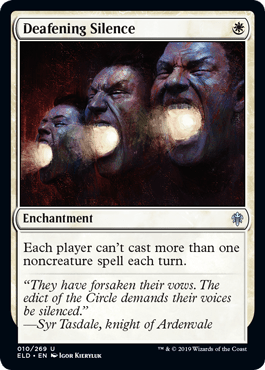
While you have tools to interact with Lotus Field, Phoenix, and Jeskai Ascendancy through Mausoleum Wanderer and Spell Queller, cards like Deafening Silence are best when backed up with pressure.
You assemble meaningful pressure and use the time it takes to answer your haymaker sideboard card to cross the finish line in Bant Spirits. While you can debate if you’d rather have Damping Sphere or Silence in this slot, you at least want one extra piece of hard interaction against the spell-based combo decks of the format.
Disdainful Stroke
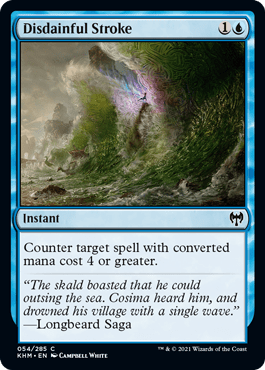
Disdainful Stroke is a reasonable answer to the uptick of Lotus Field, Azorius Control, and Izzet Phoenix’s delve package. While you already have Mystical Dispute in those matchups, having a counterspell that scales into the late game against these decks is very important at minimizing the large spells they can sneak through to answer your board.
Stroke works to keep your opponent guessing around what spells to cast and how to fight through your early board positions when in conjunction with Mystical Dispute, Spell Queller, and Mausoleum Wanderer.
Katilda, Dawnhart Martyr / Katilda's Rising Dawn

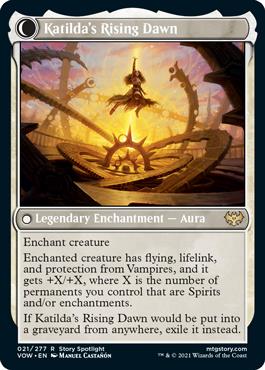
Katilda, Dawnhart Martyr gets some value with protection from vampires against the Blood cards, but really its benefit is as a massive lifelink threat that can outpace other aggressive decks. If your opponent manages to answer it once you can recur it from the graveyard and swing life total races easily.
This is one of your best cards against the aggressive decks in the format since it demands an immediate answer twice or you’re impossible to race.
Mystical Dispute
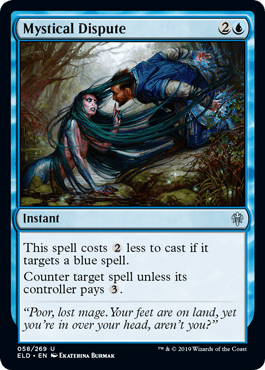
Mystical Dispute is still one of the most versatile and ubiquitous sideboard cards in the format. Bring it in against blue decks and multicolor decks like Niv to Light and watch as you pincer them between on-board pressure, tempo-based interaction like Mausoleum Wanderer and Spell Queller, and the addition of spell-based interaction.
Dispute can lock opponents out needing a specific spell to resolve once you have an advantage of board. There are very few spells that can break through and disrupt your gameplan when you pair it with Queller.
Portable Hole
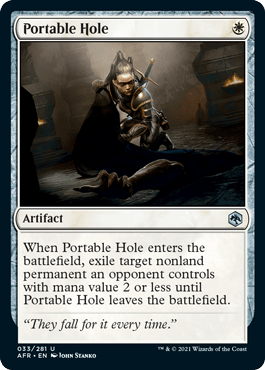
Portable Hole is one of the best tools to answer aggressive creature decks like mono red aggro. You need to immediately answer threats like Soul-Scar Mage and Eidolon of the Great Revel or risk falling behind enough in board presence and life total that they can kill you through burn as you rebuild your board.
Cheap interaction is the ideal for Spirits, and Portable Hole is one of the most efficient answers against cheap creature decks that could get under your Company and 3-drop-heavy hands.
Reidane, God of the Worthy / Valkmira, Protector's Shield

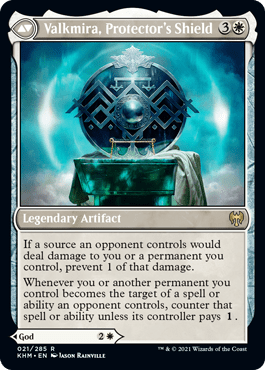
Reidane, God of the Worthy is a great addition to the sideboard. You can beat up on large spell decks like Lotus Field, Azorius Control, Dimir () Control, and other sweeper-reliant decks with the front side of Reidane. But the backside is a secret tool against the red decks in the format.
Most of the aggressive red decks in the format can’t answer Protector’s Shield. It not only buys you time, it also protects your creatures from all the burn in the deck. Don’t hesitate to prioritize Reidane in a wide variety of matchups.
Rest in Peace

Another haymaker sideboard card that works wonders when backed up with other pieces of hate and pressure, Rest in Peace can stifle the Greasefang, Phoenix, and Arcanist decks that continue to rise in popularity. Phoenix can be a tough matchup with their efficient removal, Mystical Disputes, and ability to go over the top via delve spells. So you can fight on a much fairer axis when you maximize your hate with Deafening Silence and Rest.
While you still need to mitigate your opponent’s barrage of removal, not having to answer recursive Phoenixes or delve spells gives you a much more realistic chance of beating one of the most popular decks in the format.
How to Beat Bant Spirits
Removal heavy strategies can trade one-for-one with Spirits and keep the board clear enough that you can take over the game once they run out of cards in hand. Decks like mono red aggro can line up threats in such a way that you can race through killing off the spirit lords.
Spirits preys on decks that have clunky casting costs as interaction, so the more 1- and 2-mana answers you have the harder it is for Spirits to pull ahead with a mana advantage.
Decks like Winota that don’t care as much about what you’re doing and just want to play their own gameplan without interacting via the stack can be tough. Especially if you don’t have a Spell Queller for their 4-drops.
Other Cards to Try

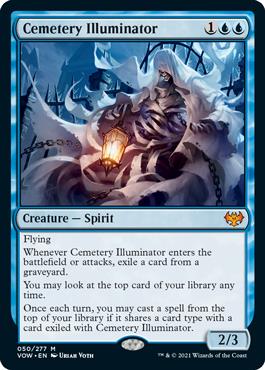
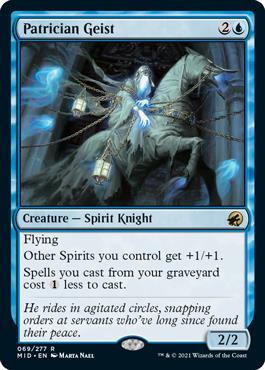
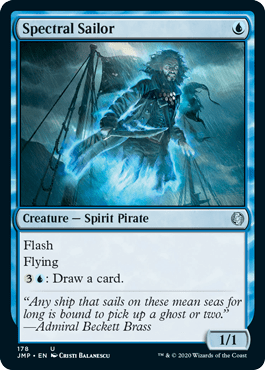
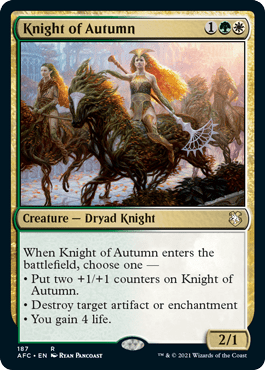



- Watcher of the Spheres
- Cemetery Illuminator
- Patrician Geist
- Spectral Sailor
- Knight of Autumn
- Archon of Emeria
- Eidolon of Rhetoric
- Settle the Wreckage
Wrap Up
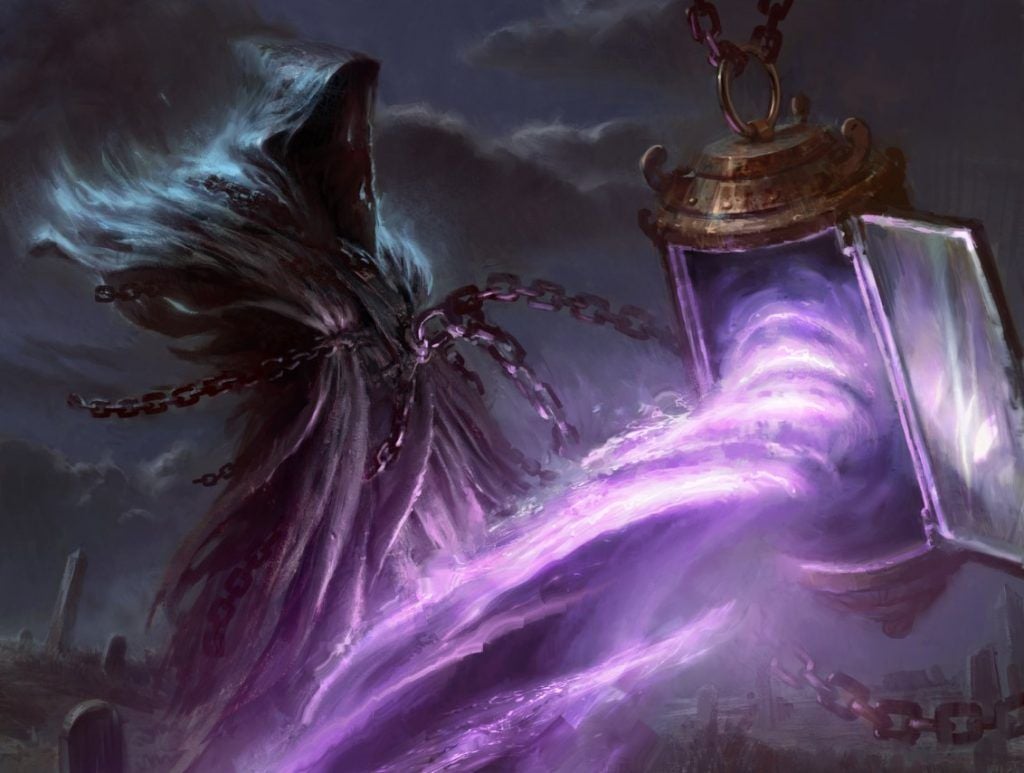
Spell Queller | Illustration by Adam Paquette
Spirits is still a staple in Pioneer, and that isn’t likely to change anytime soon. While the various Spirits decks attack different meta games there’s always a Spirits deck in the best archetypes of the format.
Bant Spirits is currently the best version, and with the upcoming New Capenna set including Bant as a primary wedge I suspect we’ll get even more cards for this archetype. While Spirits needs some time to master as we’ve see from repeated results from the same subset of players, learning to maximize your cards’ timing leads to great success with this kind of deck.
What are some of your best experiences in Pioneer with Company decks? Do you have any favorite stories with the card? Let me know in the comments below or over on Draftsim’s Twitter.
Thanks for reading, and stay safe out there!
Follow Draftsim for awesome articles and set updates: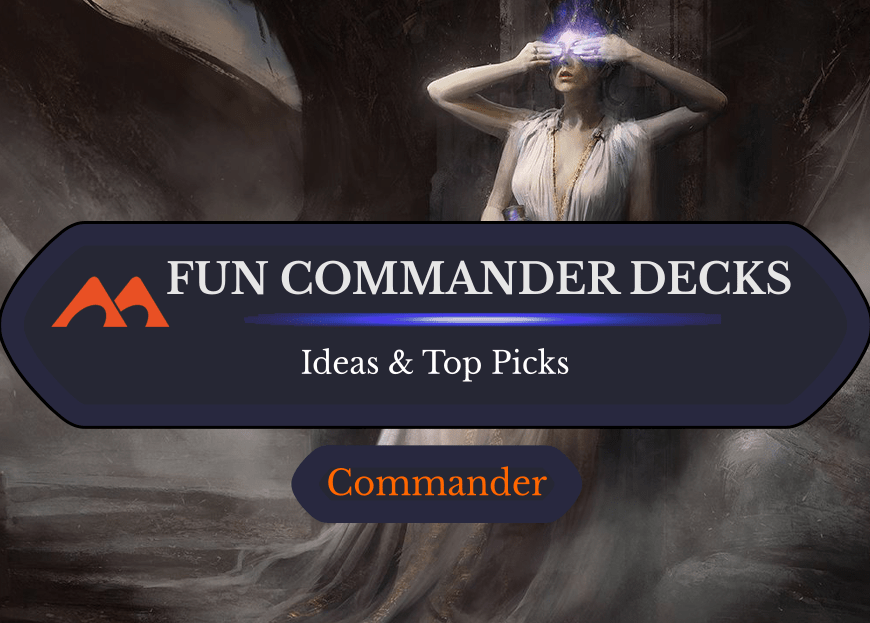
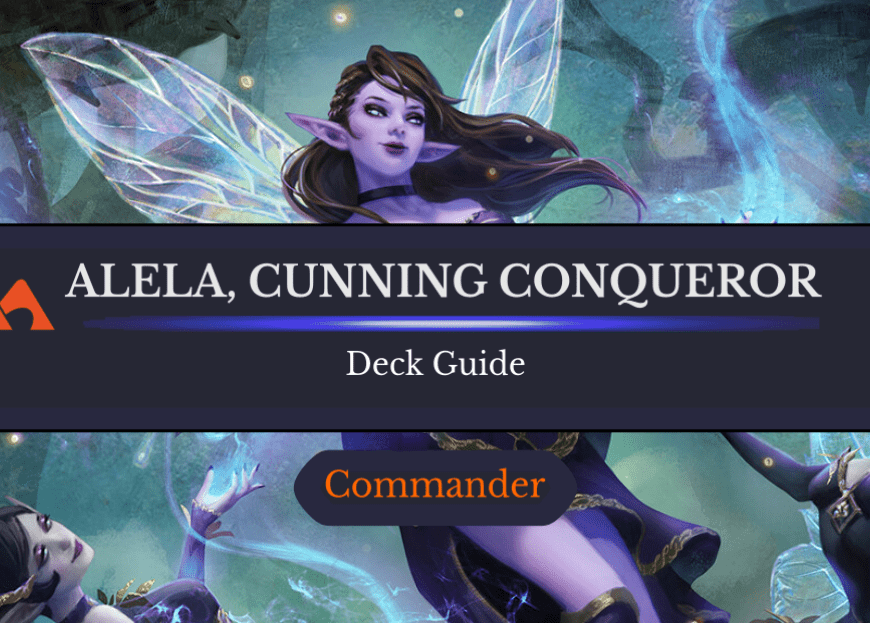
1 Comment
Nice to see my Spirits here!
Good guide buddy!
Add Comment